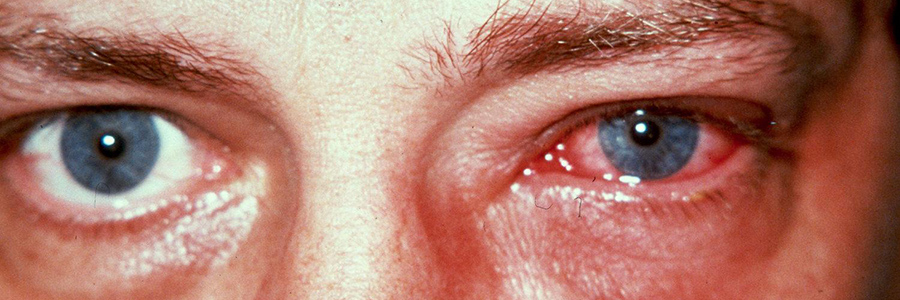
Eye Infection Symptoms
Anytime you suspect an eye infection, you should always visit your eye doctor for an eye exam.
Trying to self-diagnose your condition can delay effective treatment and potentially harm your sight.
If you wear contact lenses, you should wear only your eyeglasses until you have visited your eye doctor for diagnosis and treatment.
There are many different types of eye infections, and your eye doctor needs to determine the particular type of eye infection you have in order to prescribe the proper treatment.
Your doctor may take a sample from the affected area of your eye for a culture to assess the exact type of infection you have, if any. This may help determine the most effective treatment, such as an antibiotic that selectively targets the type of bacteria causing the infection.
Causes and Types of Eye Infections
Examples of viral, fungal and bacterial eye infections include:
Pink eye, or conjunctivitis. Conjunctivitis, also called “pink eye,” is a common, highly contagious eye infection that often is spread among children in day care centers, classrooms and similar environments. Teachers and day care workers also are at increased risk of pink eye when they work in close quarters with young children.
Common infectious conjunctivitis types often have viral or bacterial origins. Infants also can acquire conjunctival eye infections (gonococcal and chlamydial conjunctivitis) during birth when a mother has a sexually transmitted disease.
Other viral eye infections (viral keratitis). Besides common pink eye, other viral eye infections include ocular herpes, which occurs with exposure to the Herpes simplex virus.
Fungal keratitis. This type of eye infection made worldwide news in 2006 when a contact lens solution now withdrawn from the market was linked to an outbreak among contact lens wearers.
The fungal eye infection was associated with Fusarium fungi, commonly found in organic matter. This and other fungi can invade the eye in other ways, such as through a penetrating injury caused by a tree branch.
Acanthamoeba keratitis. Contact lens wearers are at increased risk of encountering parasites that can invade the eye and cause a serious sight-threatening infection called Acanthamoeba keratitis. This is why contact lens wearers should observe certain safety tips, such as avoiding swimming while wearing contacts.



